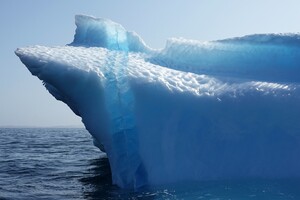This system of reservoirs can accelerate the movement of glaciers to the sea.

Scientists have discovered a giant circulating deep under the ice of West Antarctica groundwater system. Such systems could tell how the ice continent responds to or even participates in climate change, according to Cosmos magazine.
The authors of a study published in the journal Science believe that groundwater may play a key role in understanding the effect The flow of water to the movement of Antarctic glaciers into the ocean.
Read also: WMO has made a disappointing forecast for global warming
but no images have been taken so far. The scale of the groundwater we have found is so significant that it is likely to influence the formation of ice currents, “said lead author Chloe Gustavson.
Subglacial water moves along the base of the Antarctic ice sheet through the subglacial water supply network, known as the “subglacial hydrological system”. Such flows play an important role in the movement of glacier ice, becoming a lubricant between the ice sheet and the rock, and causing the deformation of wet deposits under the glaciers.
These two mechanisms allow water to fundamentally control the dynamics of the Antarctic ice sheet and possibly influence its role in sea level rise. Until now, it was assumed that the subglacial hydraulic system is shallow, water exists only at the base of the ice sheet. New research has shown that deep groundwater is also contributing.
For decades, scientists have used radar and other tools to try to image the subsurface features of the ice sheet. But these methods are not effective enough to penetrate thick ice and deep sediments to measure their water content.
In a new study, scientists used another method called magnetotelluric imaging. It measures the penetration of natural electromagnetic energy, which is generated high in the planet's atmosphere.
Ice, deposits, fresh water, salt water and bedrock conduct electromagnetic energy to varying degrees. Thus, by measuring differences, researchers can create MRI maps of these different components.
Researchers have found that sediments in the Willance Ice Creek in West Antarctica are at least 10 times more saturated with liquid water than in shallow hydrological systems inside and directly under ice.
Groundwater becomes saltier with depth. , because fresh melt water, which is formed under pressure from above and friction against the base of the ice, is displaced into the upper sediments and filtered down.
act as a brake when moving. However, if surface ice becomes thinner due to climate change, the direction of water flow may change and deep groundwater will begin to rise. And this will accelerate the movement of ice to the sea.
At the same time, the probability of this and when it may happen is unknown.
Earlier, scientists from the University of Washington said that in the clouds that form over Antarctica, there are processes through which more sunlight enters the Earth . This is important for models that predict further climate change on the planet.




